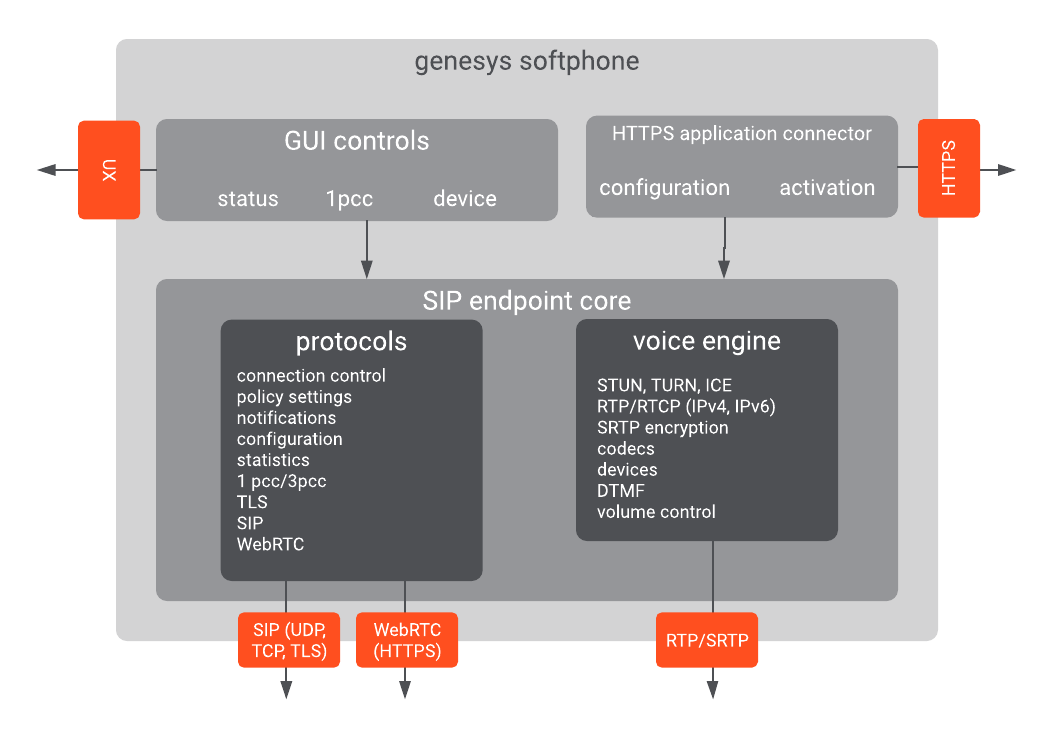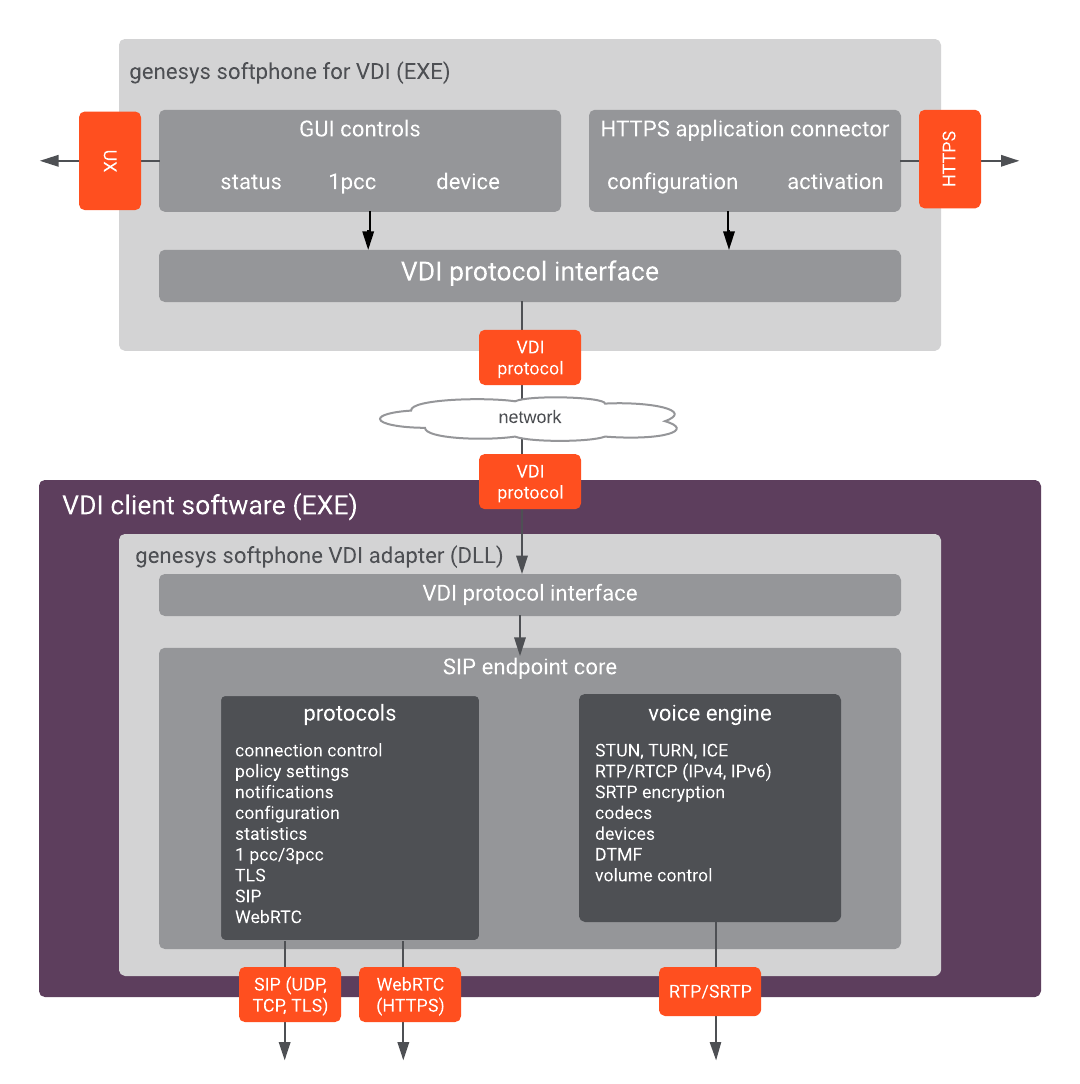Overview
This article describes the Genesys Softphone architecture in your environment. It covers both standard and Virtual Desktop Infrastructure (VDI) installations.
Architecture
The Genesys Softphone embeds the Genesys SIP Endpoint Core Library to enable the use of the SIP-based third-party call control functionality.
Standard Architecture
The following diagram illustrates the Genesys Softphone architecture when it is installed on a physical workstation as a standard executable, summarizing all product functionalities (as opposed to being installed in a virtualized environment):
Architecture in VDI Environments
Genesys Softphone supports the Citrix Virtual Desktop Infrastructure (VDI). When deployed in a virtualized environment, the Genesys Softphone software is deployed in two parts:
- The application layer, running in the virtualized system. This is the Genesys Softphone executable. The user interface and connectivity with other applications, such as Workspace Desktop Edition and Workspace Web Edition, run in the application layer. You install this part through the Genesys Softphone installation package by selecting the Citrix installation option.
- The signaling protocols, media protocols, and audio device management. These functionalities are off-loaded to the physical workstation to optimize call quality and ensure network and data center scalability. These functionalities are delivered as a plug-in (DLL) to the VDI Client runtime (Citrix Workspace app, previously known as Citrix Receiver). The plugin is deployed by the Genesys Softphone VDI Adapter installation package.
The two Software parts communicate over the Citrix ICA proprietary protocol already established for standard Citrix operations; therefore, there is no need for you to configure any extra connectivity settings.
The following diagram illustrates the Genesys Softphone architecture in the Citrix VDI environment:
Features and functionality
Genesys Softphone media stack is based on Google's open source WebRTC Native Code package. Softphone includes an adaptive jitter buffer, Packet Loss Concealment (PLC), echo cancellation, and noise reduction. For more information refer to SDK for .NET.
The following are the standard features and functions of Genesys Softphone.
DTMF signaling
Genesys Softphone supports Dual-Tone Multi-Frequency (DTMF) signaling according to the RFC 2833 standard for third-party call control. DTMF is a method used to dial telephone numbers or to issue commands to switching systems. DTMF is widely used for telecommunication signaling between telephone handsets and switching centers over analog telephone lines in voice-frequency bands.
After receiving a NOTIFY with DTMF event, the Softphone endpoint generates DTMF signals using one of the three possible methods you can specify through configuration:
- InbandRTP
- RFC 2833
- SIP INFO message
Third-party call control
The following third-party call control scenarios are supported after Genesys Softphone endpoint has registered on Genesys SIP Server:
- Make a call
- Answer a call
- Hold and retrieve a call
- Single step and two step transfers
- Participate in a conference that is provided by the GVP
- Play DTMF signals.
SIP Voice
Genesys Softphone supports the following codecs for SIP signaling:
- PCMU/8000 (G.711/mu-law)
- PCMA/8000 (G.711/A-law)
- G722/16000
- iLBC/8000 (iLBC — internet Low Bitrate Codec)
- iSAC/32000 ((iSAC/32kHz) — internet Speech Audio Codec)
- iSAC/16000
- G729/8000
- OPUS/48000/2
Security
Genesys Softphone supports the following security protocol:
- TLS v1.2
- TLS v1.3 (starting from 9.0.100.06)
For more information about security, refer to the Genesys Security Guide
Virtual Desktop Infrastructure (VDI)
Genesys Softphone supports Virtual Desktop Infrastructure (VDI) to enable agents to use Softphone in a VDI environment.
Softphone can be deployed in a Citrix virtual environment.
- Prerequisites for installing Softphone in a Citrix VDI environment
- Installing the Genesys Softphone VDI Adapter
Localization
Starting from release 9.0.012.04, Genesys Softphone can be presented in various languages.
In Connector Mode, some agent applications like Workspace Web Edition can automatically align the language with the one selected in the controlling application. In other cases, the agent can select the language using the appropriate menu.


